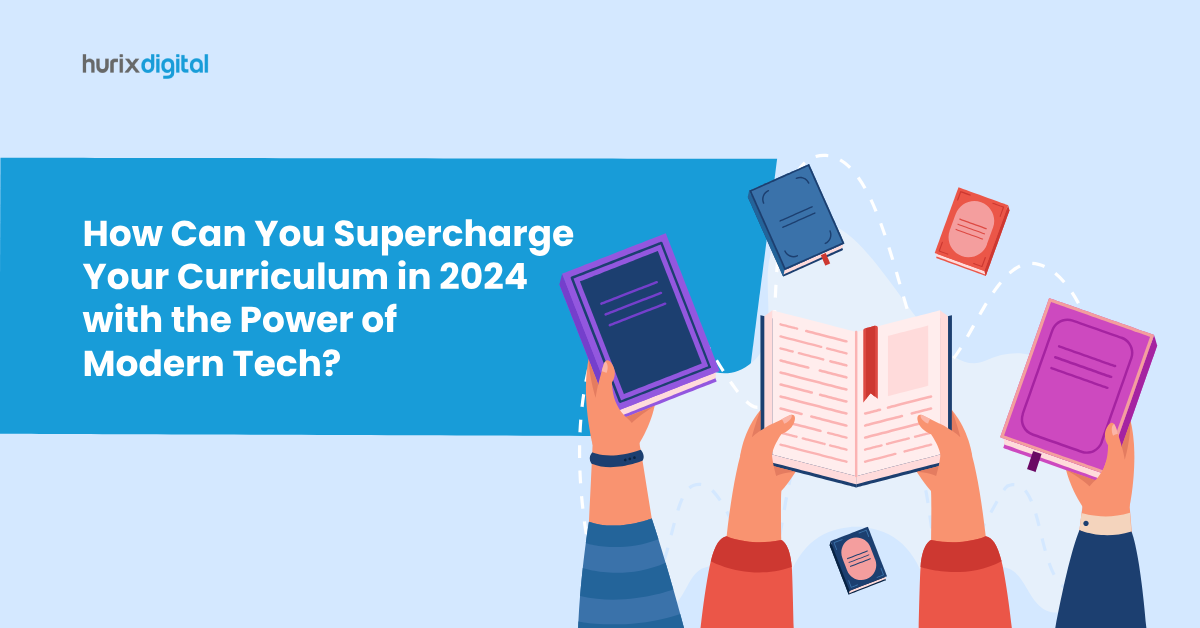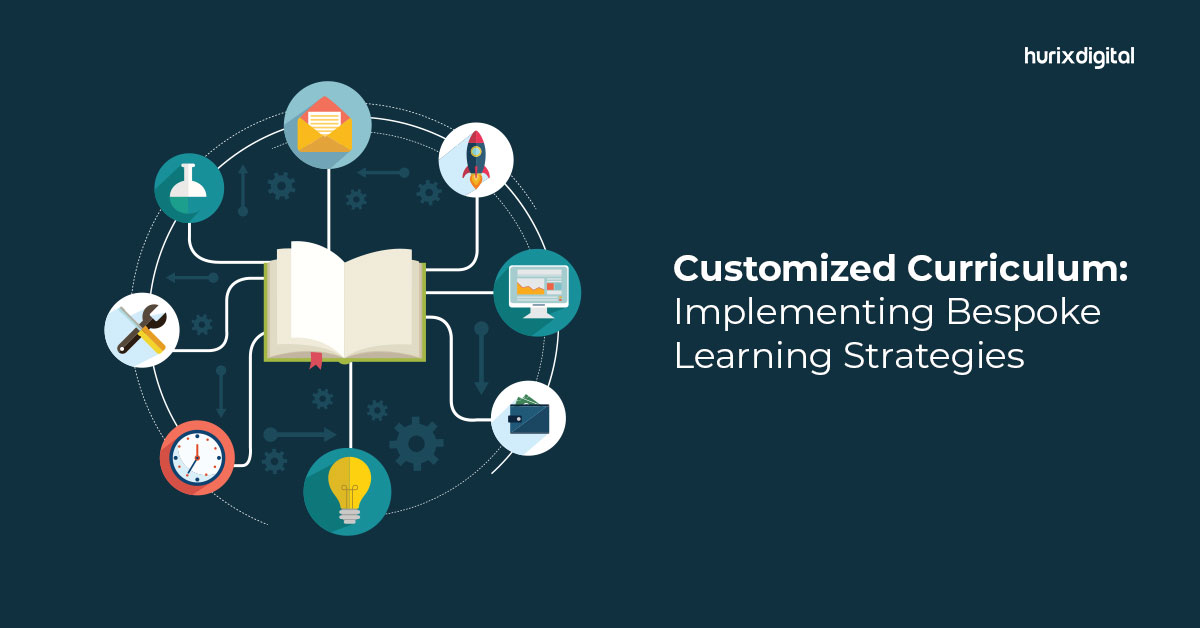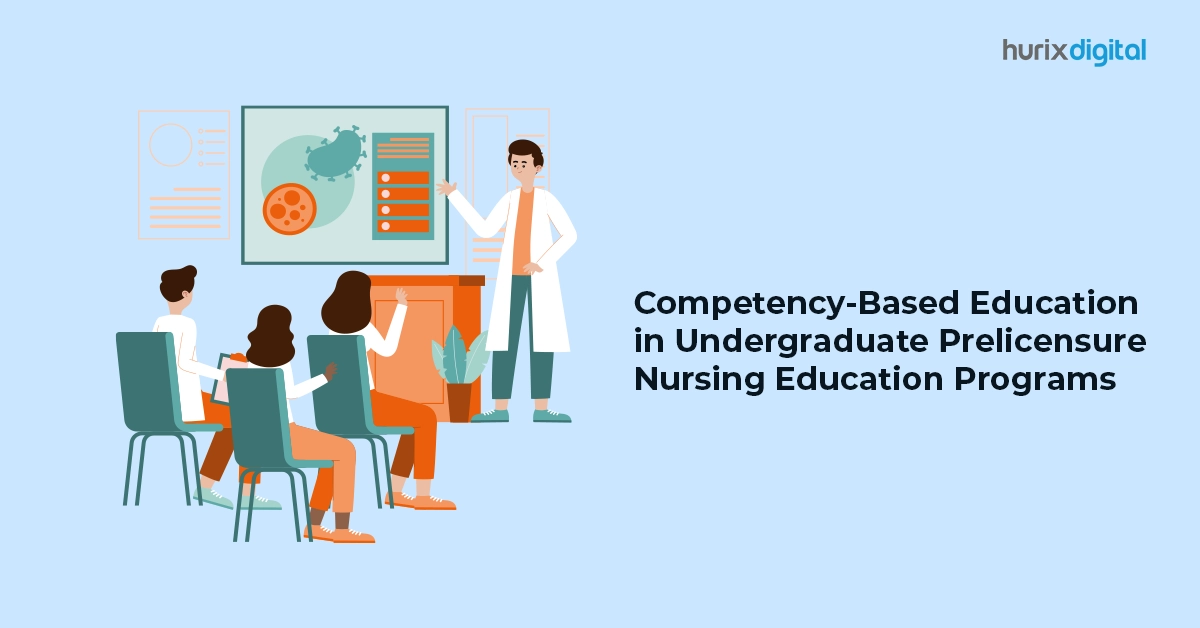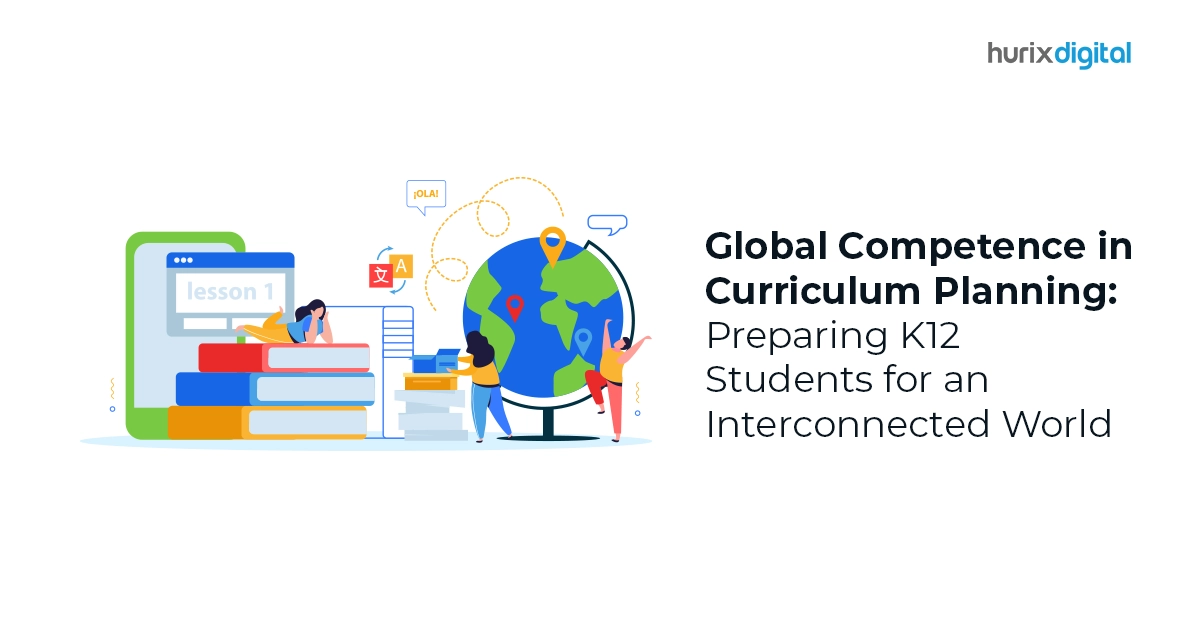
How Can You Supercharge Your Curriculum in 2024 with the Power of Modern Tech?
Summary
This blog post explains how to supercharge your curriculum with modern technology. It highlights the benefits of incorporating advanced tools like AI, AR, VR, and data analytics to create engaging, personalized, and effective learning experiences that prepare students for a tech-driven future.
The influence of technology on education has been profound and sweeping. One of the key areas of education that has embraced modern technology is curriculum development. Technological tools like AI in education play a vital role in creating an effective and engaging curriculum design for learners.
Using diverse digital platforms, innovative curriculum designs can be generated that cater to a wide range of learning approaches and capabilities. The developers can create engaging learning experiences for the tech-savvy generation.
Modern technology can be an excellent aid for various processes such as curriculum planning, creating assessments to judge learning outcomes, devising eLearning solutions, etc. Below are some points to ponder over when including digital tools in the curriculum.
Table of Contents:
Six Factors to Consider for Curriculum Enhancement Through Technology
When planning to digitally design or enhance your curriculum with the latest technological tools, here are some important factors that must be taken into account:
1. Match eLearning Solutions with Learning Needs
The Internet is a powerful digital resource with a huge amount of information that can be used to generate pertinent curricula. However, while designing any curriculum, it is imperative to understand the learning needs and context of the students, including those with disabilities.
The learners expect their schools to be more student-focused. They want a more personalized and tailored curriculum to suit their needs. To design a student-centric curriculum using modern technology, it is desirable to understand the goal of your curriculum and the learning objectives and then select the appropriate technological tool that fits in with those objectives.
The right type of tool will not only ensure curriculum enhancement but will also add relevance to it. Irrelevant tools would serve no purpose, and they would deflect from the pursued learning outcomes.
Using AI, teachers can explore lesson plans and create a precise one for the learners’ needs.
2. Motivating and Interactive Digital Curriculum Resources
No matter which type of tech tool you choose for developing your curriculum, ensuring that it is interactive and engaging to the students will boost their performance and improve learning outcomes. Educational games, simulations, and quizzes are interactive tools that stimulate critical thinking and motivate learners.
Providing multimedia content such as animations, learning videos, audio, and interactive presentations creates immersive learning, and the learners can easily understand complicated concepts. Engaging in tech tools improves students’ learning experience and challenges them to think creatively.
Creating online lectures and interactive sessions with the students even facilitates student engagement without them leaving their homes or offices.
As per a research report by McKinsey even after the COVID-19 pandemic, about 65% of the students wanted at least some aspects of their learning to be virtual, they value the flexibility and convenience it offered the most. Furthermore, it also provided them with 24×7 access to the learning material.
Also Read: Why Should Your Institute Invest in Immersive Learning Modules in 2024?
3. Incorporate Assessment Tools for Curriculum Enhancement
Adding tech-based assessments to the curriculum design to understand and gauge your students’ progress provides appropriate feedback about their growth and skill enhancement. There are several summative and formative assessment tools available that help you understand an individual learner’s skill level. It enables teachers to tweak the curriculum accordingly.
Many of these assessment tools can be adjusted as per the individual’s learning capabilities. Embedding AI in education curricula can give a tailor-made assessment for each student. It helps explore a student’s data, their preferences, strengths, and weaknesses and provides personalized learning solutions. It eliminates any error caused by guesswork.
4. Collaborate Through eLearning Solutions
Technology comes in handy when you require networking and collaboration. Thanks to modern technology, connecting with your fellow students globally has become easier.
Learners can get connected to experts and guest speakers from different fields through digital platforms to access real-world perspectives of their subjects.
Learners can discuss topics, and exchange views and ideas in online classrooms, discussion forums, and through different social media platforms, promoting better concept comprehension. They can solve problems and share ideas with fellow students. Modern tech tools enable real-world experiences that enrich the students’ learning experiences.
The curriculum has to be designed to incorporate eLearning modes of teaching so that it is accessible from anywhere. Another advantage of online learning mode is the cost-effectiveness, making the curriculum economical and available to a wide range of students.
5. Customized Curriculum Design
Using modern technology, the curriculum can be designed to customize the content to meet the diverse preferences of learners. It should offer different learning modes and options to the students so that they engage and express their choices. The curriculum should have enough versatility and flexibility to allow students to follow their style and schedule.
Tailor your curriculum to individual student’s needs to offer them personalized learning experiences. Personalized lessons and assessments help learners understand their learning gaps and enable them to progress in the right direction at their own pace.
Learning management systems probe student performance to create tailor-made learning pathways for them for a deeper understanding of the subject.
6. Industry Readiness with Digital Curriculum Resources
Adding digital curriculum resources also enables students to develop digital communication skills, and prepares them for the future demands of the industry.
As industries adapt to the latest digital technology, the learners must be well-equipped to apply tech for problem-solving, introducing new concepts, and other processes. Designing a curriculum to incorporate technology will draw more pupils as it equips them to further their career opportunities and makes them industry-ready.
Check Out: Hurix Minibook: The Paradigm Shift in Higher Education with Curriculum Development
Conclusion
Technology has completely transformed the way education is imparted presently. Innumerable tech tools have changed learners’ perspectives on how knowledge can be acquired. No wonder most educational institutions are integrating digital curriculum resources for curriculum development.
A large majority of students use digital learning methods for skill development and knowledge; hence, it becomes vital for educational institutions to embrace these tech tools for every knowledge process, especially in designing curricula to suit the tech-savvy generation’s aspirations.
Hurix Digital is a well-known content delivery platform that provides interactive online programs for educational institutions. From eLearning and training solutions and K-12 content solutions to animation and video services, they fulfill every educational need and help develop appropriate training materials.
Connect now to get more information about Hurix Digital.

Senior Vice President
A Business Development professional with >20 years of experience with strong capability to sell new solutions and develop new markets from scratch. New Market Entry Specialist with experience of working in two of the largest emerging markets – China & India. Also covered other key markets in APAC, US, EU & ME. Exceptional experience of conceptualizing, ideating and selling new learning technologies like VR AR, etc. across multiple industry verticals.







